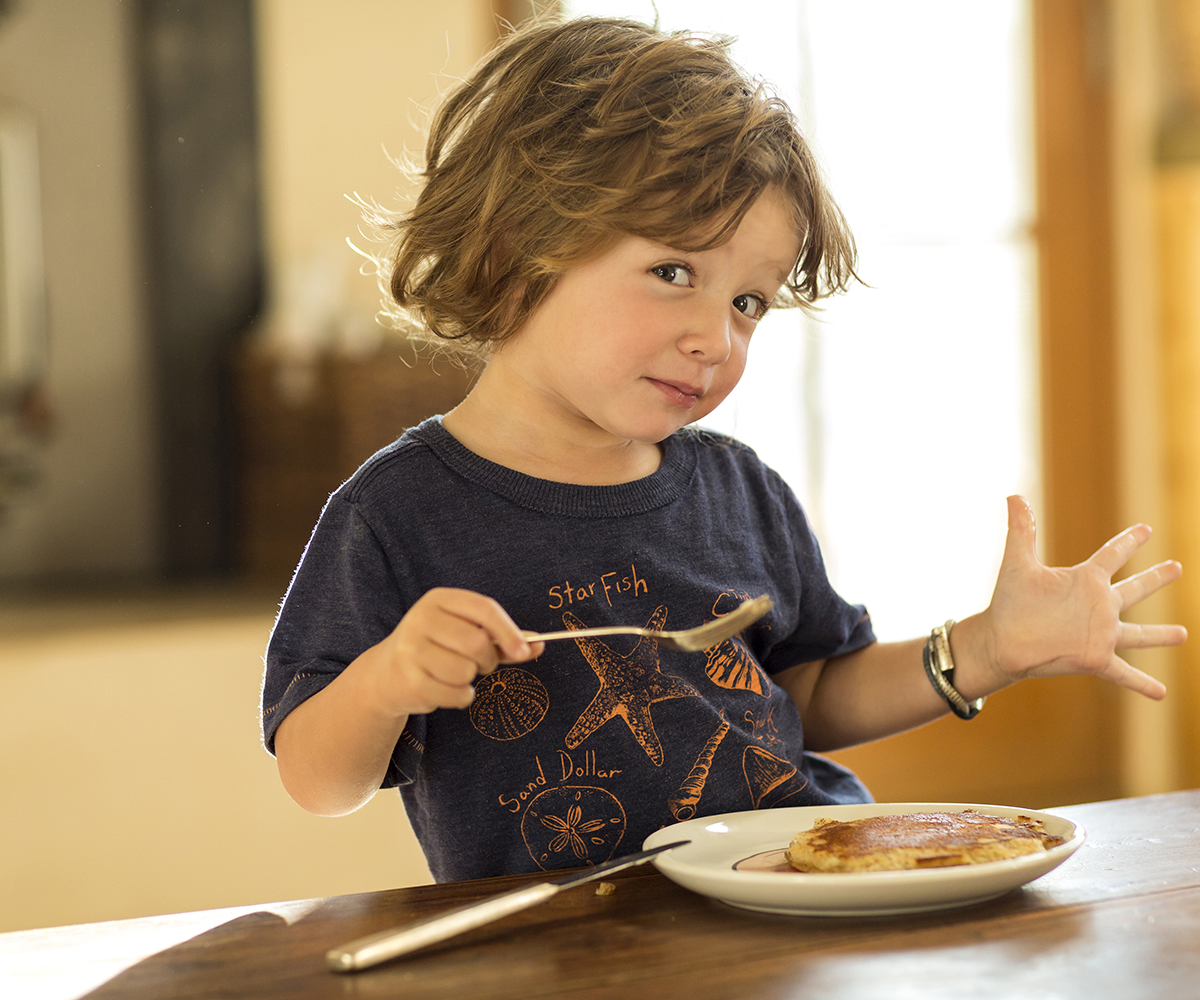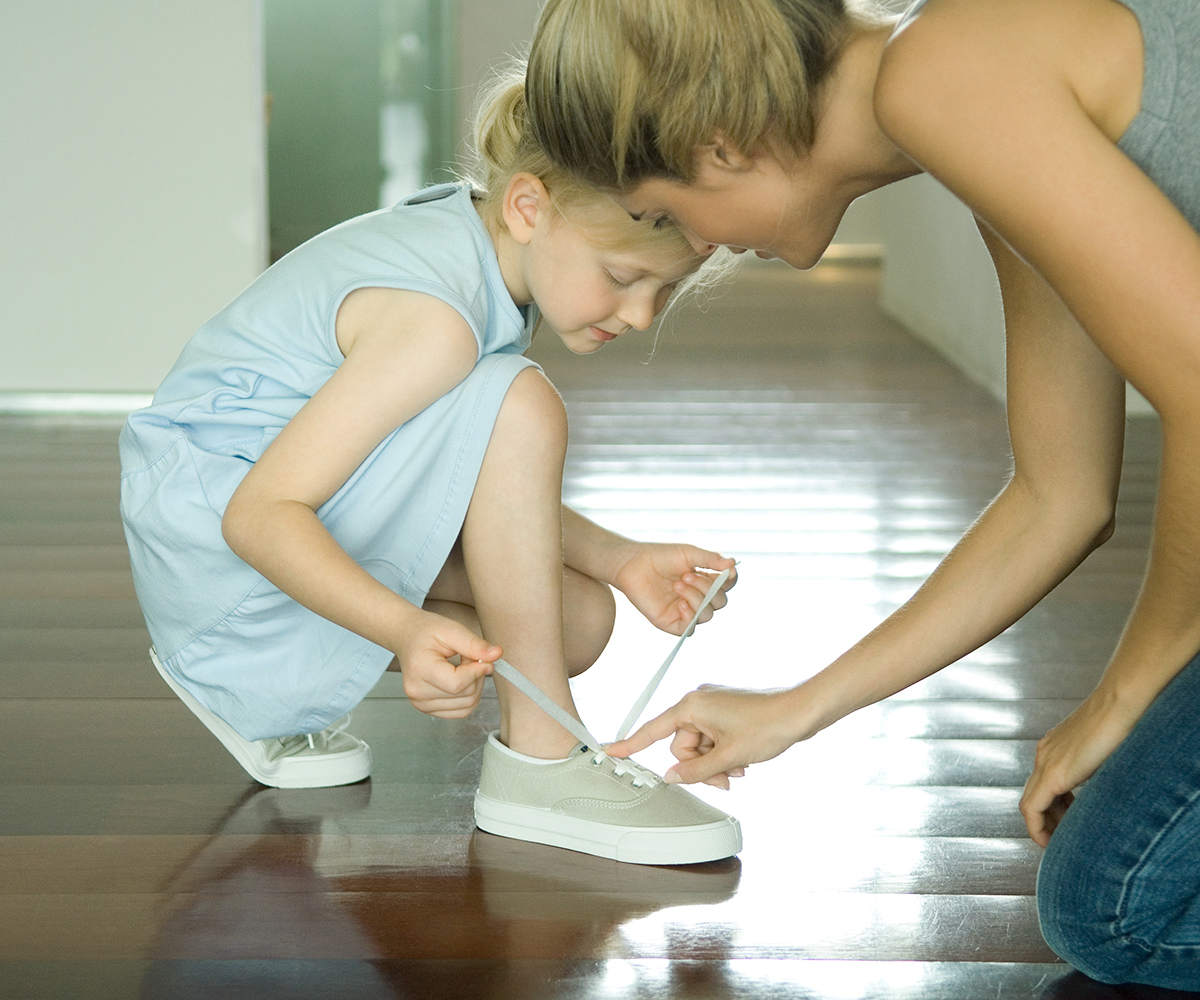When you have little kids it’s hard to imagine never having to tie their shoe laces for them again, or having to cut up their food. But believe us, that time comes and when it does you won’t know yourself. You’ll reduce the amount of time it takes to get ready to go out anywhere by a third – and you’ll be able to eat your dinner while it’s hot!
So when can you expect the magic to happen? According to parenting expert Jackie Riach from Triple P Parenting there’s no set age and all kids are different – you know your kid best. But by the age of seven years most kids should be tying their own laces and eating with a knife and fork, if you’ve put the time into teaching them.
“Sometimes it’s more about parents not setting aside the time to teach their kids,” Jackie points out – because Lord knows, we all find it quicker and easier to do it ourselves. But even though most parents feel time-poor, encouraging your child’s independence is important.
“Sometimes kids, for example, might refuse to do swimming at school,” Jackie explains. “But it’s not because they don’t want to swim; it’s because they’re anxious about getting dressed or undressed without you there to help. Things like putting your pants on or turning inside-out clothes the right way round seem simple to us, but they’re not to a small person who’s never been taught how to do it before.”
Kids who do things for themselves are more confident to try new things. They also understand that being part of a family is being part of a team in which everyone contributes.
Here, Jackie guides us through figuring out when kids are ready to be taught and, then, the best way to teach them.

Knowing when they’re ready
Generally, skills like doing up buttons, tying shoelaces or using a knife and fork require good dexterity, which is developed through activities like drawing, writing, dressing dolls or threading, for example. Kids that prefer outdoor or rough-and-tumble play might take a bit longer to develop their fine motor skills.
You can also get an idea about whether your child is ready by looking at how messy they are when they eat. If they still end up covered in food, you might need to give them a little more time before you try teaching them to tie their laces.
If they’ve started school what’s their handwriting like? Are they forming recognisable letter shapes?
Often kids will start trying things when they’re about ready, Jackie says.
Sit on your hands
Resist that urge to do everything for them – even if it means sitting on your hands. Even small kids can make their bed by pulling the duvet up to the pillow.
Still packing their bag? Write or draw them a list to follow. Who’s emptying their bag at the end of the day? Again, that should be your child.
Break tasks down
Most tasks involve a number of steps, and when you’ve been doing them for years you can forget that. Little kids are learning everything from scratch so take them through each task one step at a time.
The ‘forward’ or ‘backward’ training techniques
With forward training you get your child to do the first part of the task then you do the rest. Over time you reduce your input until your child is completing the entire task on their own.
With backward training you get your child to do the last part of the task and, as above, you gradually reduce your input. Putting on pyjama pants is a good example. Get your child to pull them up from the knee, then from the feet, until they’re eventually putting them on by themselves.
Ask, say, do
Triple P teaches a method called ‘ask, say, do’. This is how it works:
Ask: What’s the first thing we do when we brush our teeth?
Say: Your child answers ‘get out your toothbrush’.
Do: You say ‘that’s right, now you show me how you get out your toothbrush’. Child gets toothbrush out.
Ask: What do we do next?
Say: Your child says ‘get out the tooth paste’.
Do: You say, ‘that’s right, show me how you get out the toothpaste’. Child gets toothpaste out.
And so on.
Heap them with praise
A child who feels encouraged and supported will be far more motivated to keep trying and take on other new tasks.
Learning to tie shoe laces
This is probably the hardest skill of all to teach kids, and there are a few different ways. Sometimes parents discover they’re both trying to teach their child a different way, which doesn’t help!
Start by practicing on something other than a shoe on their foot – make a ‘lace board’ or you can buy toys that are specifically for practicing lace-tying, doing up buttons and so on.
Sit beside them so you’re looking from the same perspective.
Here’s an easy method that Kidspot suggests:
Fold each end of the lace into a single “bunny ear.” You can hold the “ears” in place between your thumb and pointer finger on each hand.
Cross the bunny ears so that they form an “X” in the air.
Loop the bottom bunny ear over and through the top bunny ear. This will create a second knot.
Pull the bunny ears out to the side away from the shoe. This will create a square knot that will not easily come undone and will hold the shoe in place.
If they’re not picking it up and teaching them is getting frustrating for both of you, leave it and try again in a few weeks or months. You’re better keeping them in velcro shoes until your child is ready.
Eating with a knife and fork
Start by teaching them how to hold their knife and fork correctly. Put your hands over their hands as they practice cutting so they can get a sense of how much pressure to apply and how much movement is required when you cut.
Give them soft foods to practice cutting.
Make it an expectation that they use both their knife and fork every dinner time and role model this yourself.
Don’t expect miracles – this one takes time!


